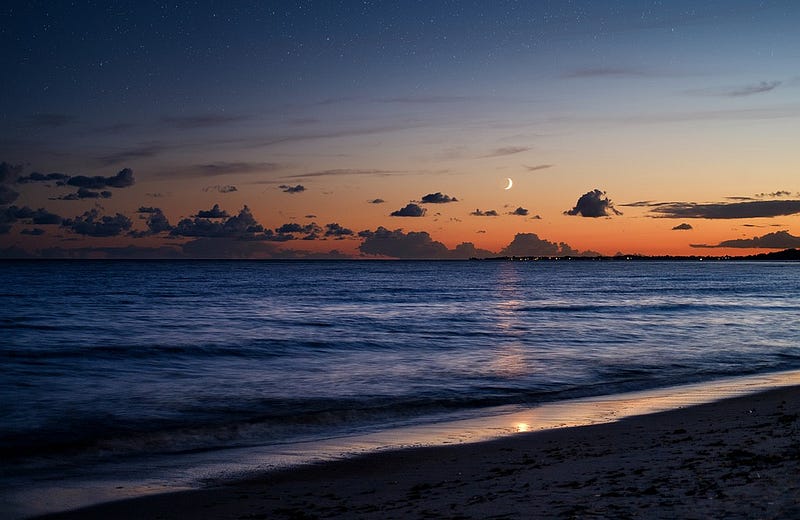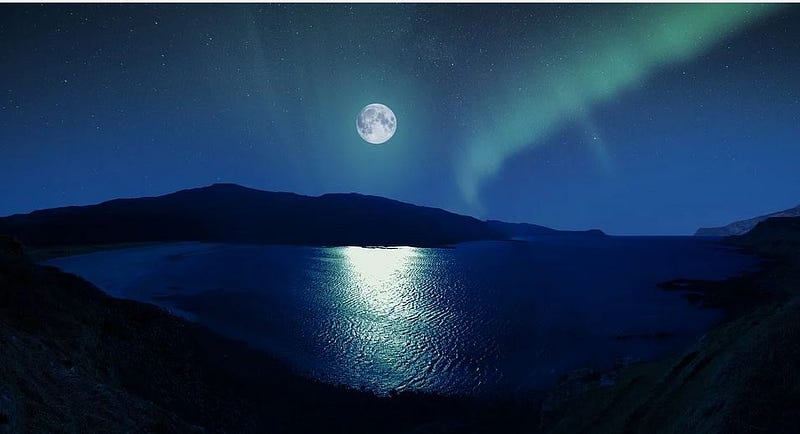The Moon as Earth's Companion: A Deep Connection
Written on
Chapter 1: The Early Earth and Its Turbulent Beginnings
In its early days, Earth was a chaotic and tumultuous environment—definitely not a place anyone would want to experience firsthand. When considering the perilous creatures that roamed during the later dinosaur era, the conditions before that time would have made the Jurassic period seem like a child's gathering.
Current estimates suggest that Earth formed around 4.54 billion years ago, give or take a few months. In the grand scheme of the universe, Earth was still very much in its infancy even a few million years later. We were essentially in the phase of figuring out where to place our new decor, as the planet remained a disarray of materials swirling in space. This was until a Mars-sized body, known as Theia, collided with Earth.
This event is central to the widely accepted 'giant impact' theory regarding the Moon's origin. Until new evidence arises, this remains our most credible explanation, supported by computer simulations.
After the collision, both celestial bodies underwent significant transformations. Earth became a chaotic mass of molten rock surrounded by a rotating disk of similar debris. Over time, this disk would coalesce to form what we now recognize as the Moon, which initially orbited much closer to Earth. Interestingly, the Moon is gradually moving away from us at a rate of approximately 1.5 inches per year. A full Moon three billion years ago would have been a breathtaking sight.
While we typically refer to the Moon as Earth's satellite, this label feels insufficient. Given that the Moon is about a quarter of Earth's size and is in close proximity, an unbiased observer might classify them as a binary planet system. Not only do they share a similar geological composition and history, but their connection extends beyond mere cohabitation. While the Moon lacks life, Earth's very existence hinges upon it. It’s unlikely that life would have had the opportunity to develop on Earth without the Moon's influence.

The gravitational forces of both the Sun and the Moon play crucial roles in shaping Earth's tides. Despite the Sun's gravitational pull being 178 times stronger than that of the Moon, the Moon's proximity allows it to exert a twice as strong influence on Earth. The Moon is roughly 1.5 light seconds away, whereas the Sun is nine light minutes distant. Remarkably, solar eclipses occur because, although the Sun is about 400 times larger than the Moon, it is also around 395 times farther away on average. This unique alignment allows the Moon to perfectly obscure the Sun during an eclipse.
This cosmic coincidence is indeed splendid.
As the Moon orbits Earth, it continuously pulls a bulge of water towards it, primarily from our oceans. This gravitational interaction results in the ebb and flow of tides. Unlike solar days, Earth's tides are governed by the lunar cycle, taking about 12 hours and 25 minutes from one high tide to the next. The rhythmic rise and fall of the tides permitted early marine life to venture onto land, gradually evolving until they could thrive outside the ocean. Interestingly, some species, like whales, have made the reverse transition from land mammals back to marine life. While it's conceivable that life could have adapted to land without the Moon, no known biological mechanism exists to support this transition naturally.
To date, only twelve humans have set foot on the Moon, engaged in various activities from walking to playing golf. Notably, all of these individuals have been men. It’s worth pondering how future historians might react to the absence of women in this context, considering that space presents dangers for all humans, regardless of gender.

Throughout history, the Moon has often been linked to femininity. The terms 'menstruation' and 'menses' derive from the Latin word 'mensis,' meaning 'month,' which relates to the Greek 'mene,' signifying 'Moon.' This connection stems from the similarity in the durations of the lunar and menstrual cycles; a typical menstrual cycle lasts about 29 days, while the lunar cycle spans approximately 29.5 days. The synchronization between the female hormonal cycle and the lunar phases is both intriguing and remarkable, suggesting that women should have been the first to explore our sister planet.
The next time you gaze up at the luminous orb in the night sky, reflect on its significance to our planet and all its inhabitants. The term "lunatic" originates from the Latin 'lunaticus,' referring to periods of madness believed to be influenced by the Moon. While this idea is certainly rooted in folklore, it may hint at a deeper truth: humans might instinctively sense the Moon’s gravitational pull, at least on an emotional level.
Who can behold the gentle radiance of our celestial companion on a dark night and not find solace in its presence?

Chapter 2: The Moon's Impact on Earthly Life
The first video titled "Is the Moon Earth's Twin?!" delves into the fascinating similarities and relationships between the Earth and the Moon, questioning whether they are truly twins in the cosmic sense.
The second video, "We Love the Earth (and It's Sister Planet: Moon)," explores the profound connection between our planet and its lunar companion, highlighting the importance of this relationship for life on Earth.